In our modern age of climate change and finite resource extraction, the sustainability of building materials matters. Indeed, building with ecological materials can decrease both your energy consumption and your ecological footprint. Sustainable building practices can also lower carbon emissions and minimize harm to human health.
In this post, we review which construction materials are sustainable and why, and offer a list of our favorite sustainable materials. Read onward to learn how to make a building sustainable!
Defining the sustainability of building materials
Are you curious about what materials are sustainable? Sourcing — or how you acquire your materials — is one way to approach sustainability in construction. For example, sustainable materials are often sourced from renewable resources or include salvaged materials, like reclaimed barn wood. This reduces the strain on finite resources and minimizes environmental impact. Ideally, building materials are sourced directly from build sites or found locally in the surrounding area, reducing the need to transport materials, which relies on gasoline and emits carbon. Natural building materials like cob, strawbale, and logs are some of the most sustainable materials that you can use in construction, especially if they are found locally.
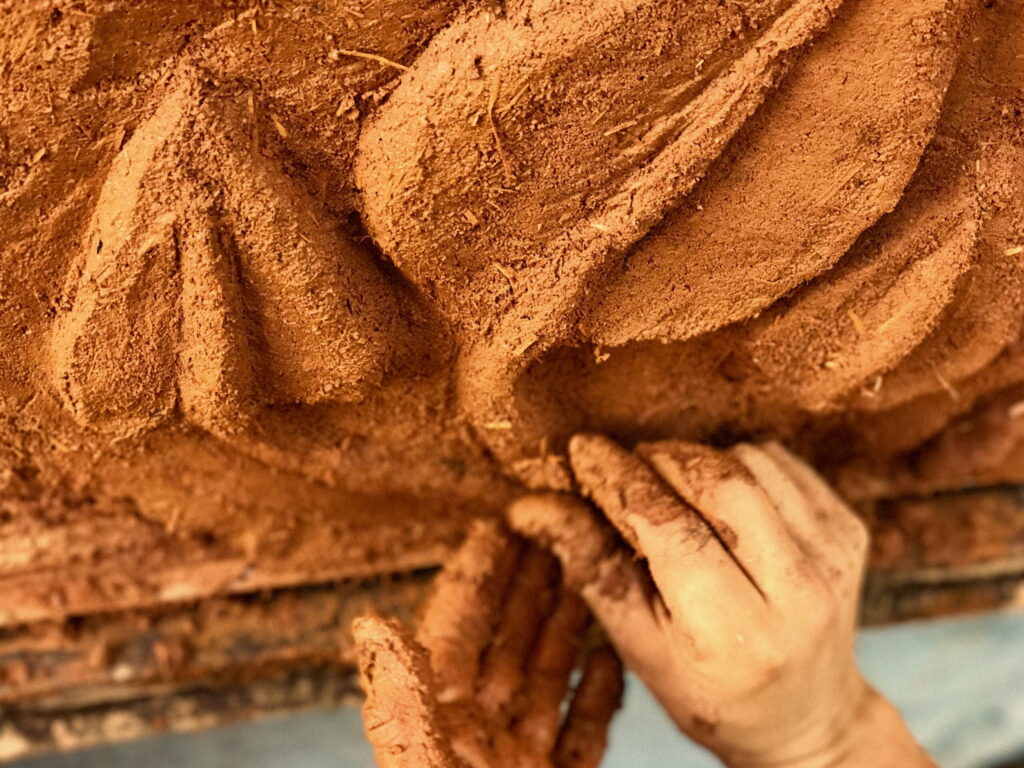

Manufacturing processes also play a significant role in the sustainability of construction materials. For instance, conventional building materials like cement require a significant amount of energy and resources to produce. In fact, if the global cement industry were a country, it would be the world’s third-largest carbon emitter, topped only by the US and China. On the flip side, sustainable building materials, like adobe, are produced using methods that minimize emissions, waste, and energy consumption.
Durability is an important aspect of sustainability. That’s because building materials with a longer lifespan reduce the need for frequent replacement or repairs, conserving resources and reducing waste. Choosing durable materials like stone or bamboo can significantly lower environmental impact due to their longevity.
Energy efficiency is another element of the sustainability of construction materials. More specifically, choosing to build with insulative or high thermal mass materials can help you naturally heat and cool your home. This will not only save you money on your monthly energy bills, but also helps reduce carbon emissions.
And finally, social equity is an essential consideration in defining sustainable construction materials. This means ensuring that the production of building materials involves fair labor practices, safe working conditions, and equitable treatment of workers. Certainly, the health and well-being of our fellow humans is important and significantly impacts the sustainability of any building material.
To learn more about sustainable building, including natural building, and how to create your own tiny house from the ground up, check out our comprehensive online program!
Some of our favorite sustainable materials
At Wild Abundance, we’re passionate about teaching ecological building methods. Our instructors have decades of experience building sustainable tiny houses, and we want to share some of our favorite ecological building materials with you! Now, let’s dive into the list of sustainable materials.
Salvaged materials
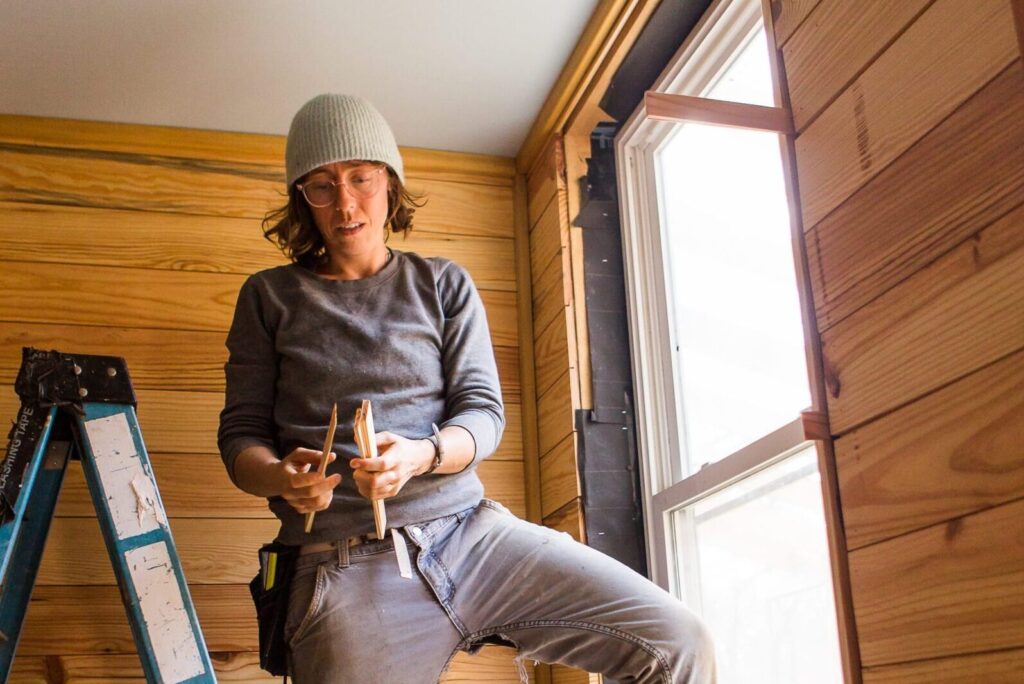

Want one of our top tips for how to make a building sustainable? Use salvaged materials! Buying second-hand building materials at places like the Habitat for Humanity ReStore can help you save money on your build and make it more eco-friendly. By using recycled or salvaged building materials, you’re saying “no” to mass-produced products that use vast amounts of fossil fuels in their production and shipping processes. You’re also helping to limit waste by keeping these materials out of landfills.
Check out the video below to learn more about where you might find salvaged building materials.
Natural building materials
Cob
Cob is an ancient natural building technique that includes clay, sand, straw, and sometimes an extra binder like wheat paste or hydrated lime. These materials are mixed and shaped to form cob bricks, which are then used to construct walls. Cob can be used to build entire buildings, but it’s time- and labor-intensive. Depending on your soil makeup, you may be able to create cob using native soil from your land, which is a very sustainable option.
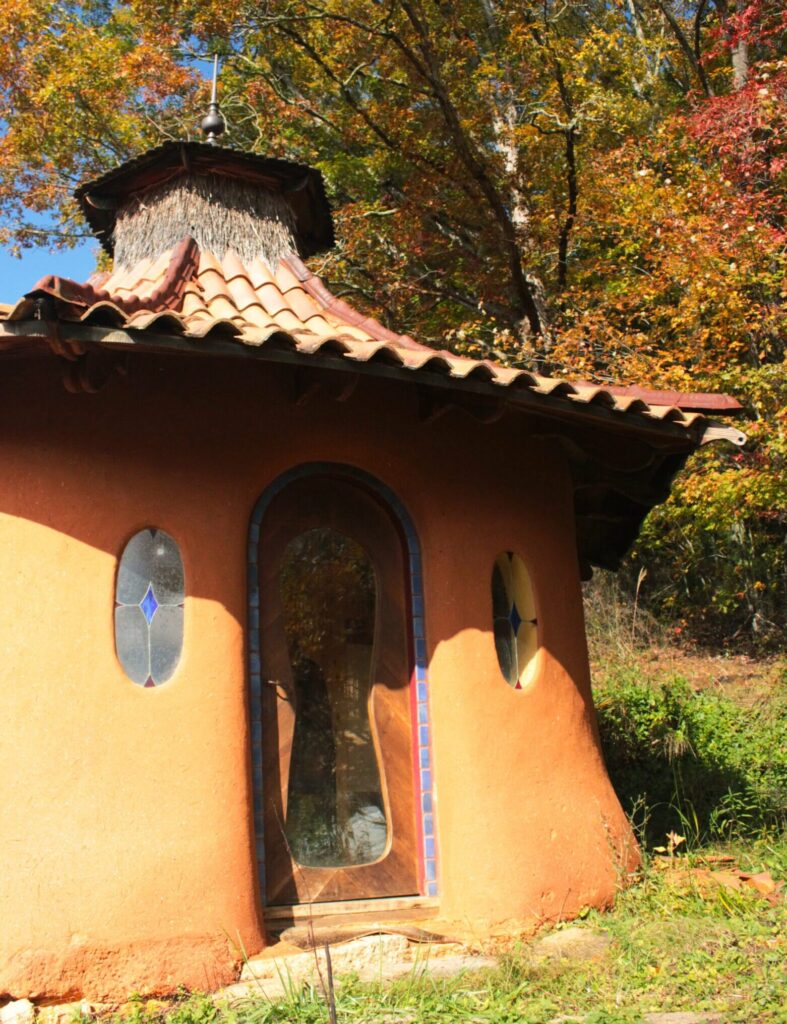

Cob is almost as heavy as stone, so you can’t build it on a post foundation. It’s essential to build a cob wall on a burly foundation, like a rubble trench foundation. It’s also a thermal mass material, which is best in places with freezing nighttime and hot daytime temperatures. This creates a pleasant, happy medium temperature inside your building and can help you reduce reliance on heating and cooling systems.
Check out the video below to learn how to make a batch of cob.
Strawbale
Strawbale construction was first seen in Germany about 400 years ago, and there are multiple techniques for building with straw bales. We recommend constructing wooden forms to hold up your roof and then filling it with straw bales. Or, you can construct a timber frame inset from the edge of a wall, cantilever out, and build up straw bale walls. If you plan to have a load-bearing straw bale wall, you’ll need to compress the straw bales really well to support the roof’s weight.
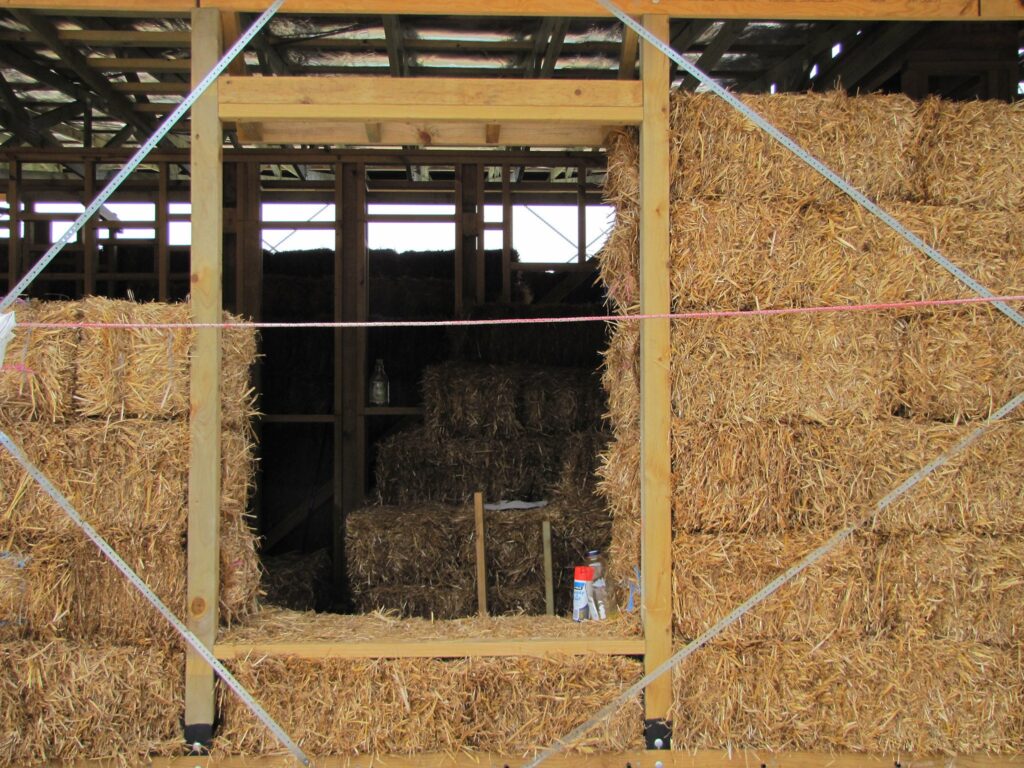

Strawbale is a highly insulative wall system with an R-value of up to 40, which can help you reduce the cost and environmental impact of heating your home. In some places, straw bales are part of the waste stream. Using straw bales that are part of a waste stream diverts materials from being sent to a landfill, which is an incredibly sustainable move. Straw bales can also be a local material, depending on your location.
Logs
Log cabins make a lot of sense to build in places with forested land. And, if you harvest suitable trees by following regenerative timber harvesting practices, you likely won’t damage the forest. In fact, you might even enhance the forest, depending on the forest itself. Log cabins can be fairly insulative, with an R-value of 1.4 per inch for softwoods and .7 per inch for most hardwoods.
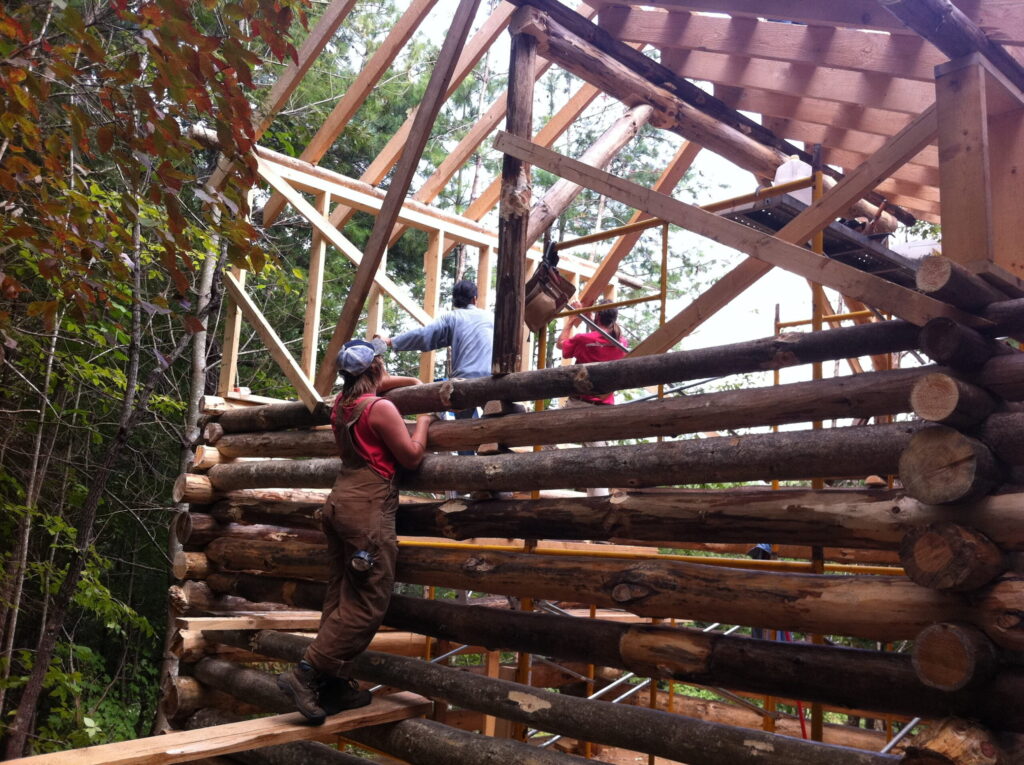

When you harvest logs and other wood, and you then use that wood in a building, you’re sequestering carbon for the life of the building. Sequestering carbon in a building means capturing and storing carbon dioxide (CO2) emissions within the building itself, preventing it from entering the Earth’s atmosphere. So, if you build a building that will last for decades, you’re tying up that carbon and decreasing greenhouse gas emissions. This is a great reason to build with wood and other natural products.
Tiny houses for sustainable living
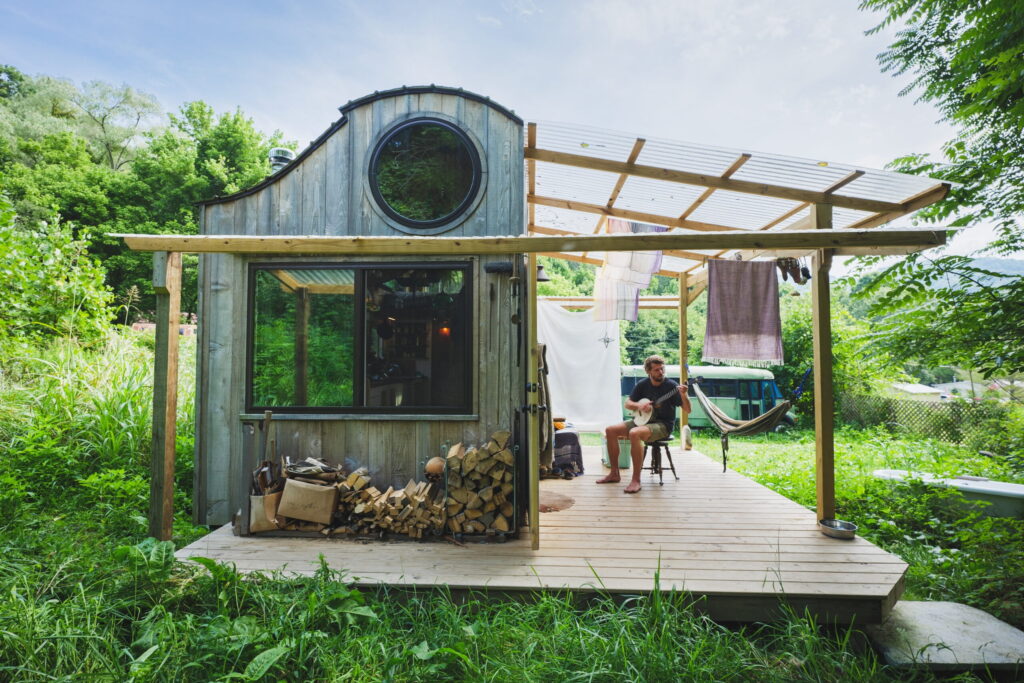

If you value sustainability in construction, then consider going tiny! Tiny houses require fewer building materials, meaning even less energy and resources are used in their construction. This is especially important considering the significant amount of energy and resources needed to produce building materials like cement, steel, and lumber, which are often used in conventional home building. In addition, the reduced size of tiny houses requires less energy to heat, cool, and power, resulting in lower energy consumption and reduced carbon emissions. We dive into the details of sustainable building materials and more in our Online Tiny House Academy.


